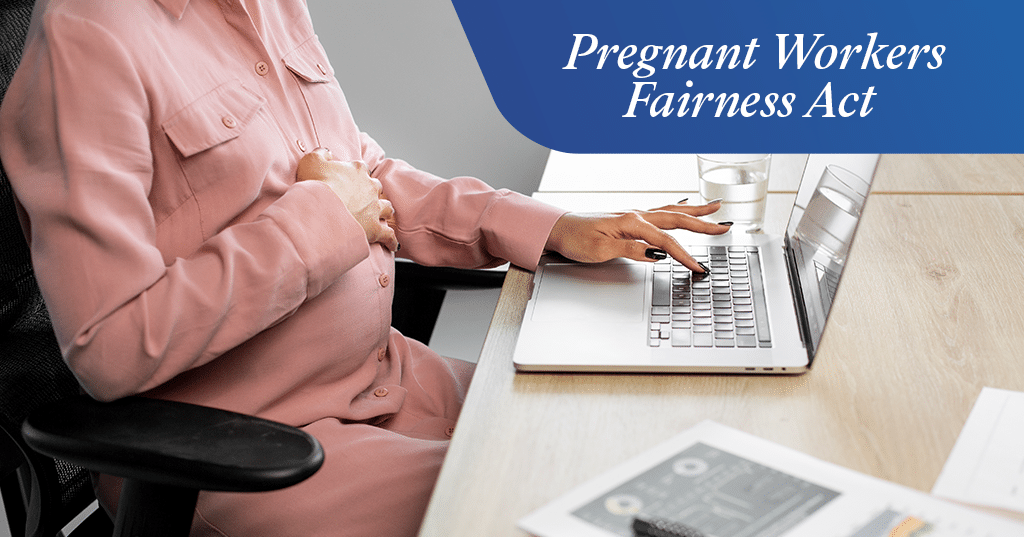
Navigating the Pregnant Workers Fairness Act: What Employers Need to Know
On April 15, 2024, the U.S. Equal Employment Opportunity Commission (EEOC) released a final rule to implement the Pregnant Workers Fairness Act (PWFA). The final rule clarifies definitions and limitations under the PWFA and seeks to help employers understand their duties under the law. The final regulation will be published in the Federal Register on April 19, 2024, and becomes effective on June 18, 2024.
In a significant stride towards workplace equity, the Pregnant Workers Fairness Act (PWFA) is poised to make a tangible impact on how employers accommodate the needs of pregnant employees. Recently, a final rule has been issued to implement the PWFA, shedding light on crucial definitions and limitations, and empowering employers to fulfill their obligations under the law. Let’s delve into the essentials of this groundbreaking legislation and what it means for businesses.
Understanding the PWFA
The PWFA mandates that most employers with 15 or more employees must provide “reasonable accommodations” for workers facing limitations due to pregnancy, childbirth, or related medical conditions. These accommodations are to be provided unless they pose an undue hardship for the employer.
Key Highlights from the Final Rule
The final rule, which will be published in the Federal Register on April 19, 2024, and effective from June 18, 2024, offers crucial guidance to employers and employees alike. Here are some notable highlights:
- Expanded Definition of Reasonable Accommodations: Employers will now have clearer examples of reasonable accommodations, including additional breaks to drink water, eat or use the restroom; a stool to sit on while working; time off for health care appointments; temporary reassignment; temporary suspension of certain job duties; telework; or time off to recover from childbirth or a miscarriage, among others.
- Inclusive Approach to Medical Conditions: The final rule provides guidance on accommodating a spectrum of medical conditions related to pregnancy such as miscarriage or stillbirth; migraines; lactation; and pregnancy-related conditions that are episodic, such as morning sickness.
- Communication and Resolution: Emphasizing early and open communication, the rule encourages employers and workers to address accommodation requests promptly and efficiently.
- Documentation Requirements: Employers are clarified that they should only seek supporting documentation for accommodation requests when reasonable under the circumstances, streamlining the process for both parties.
- Undue Hardship Clarification: Clear guidelines are provided on when an accommodation may impose an undue hardship on an employer, ensuring a fair assessment of each situation.
- Defenses and Exemptions: Employers are informed about their rights to assert defenses or exemptions, including those based on religious beliefs, early in charge processing.
Accessing Resources
Employers can find more information and resources related to the PWFA and EEOC’s final rule on the EEOC’s What You Should Know About the Pregnant Workers Fairness Act webpage.
In conclusion, the implementation of the PWFA and its final rule marks a significant stride towards fostering inclusivity and support for pregnant workers in the workplace. By understanding their responsibilities and leveraging available resources, employers can create environments that prioritize the well-being and dignity of all employees, ensuring a more equitable and productive workforce for the future.






